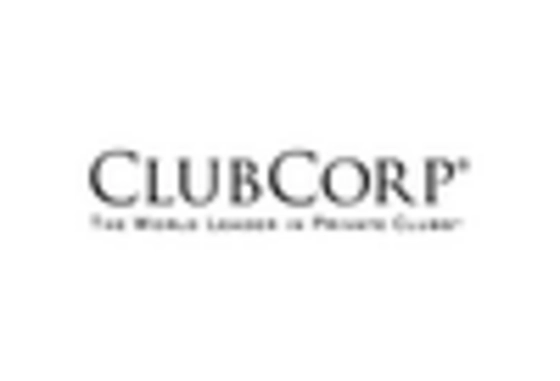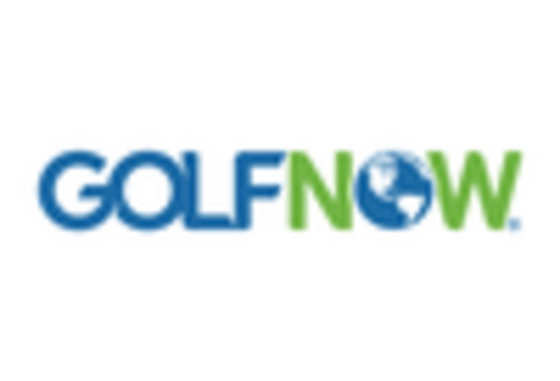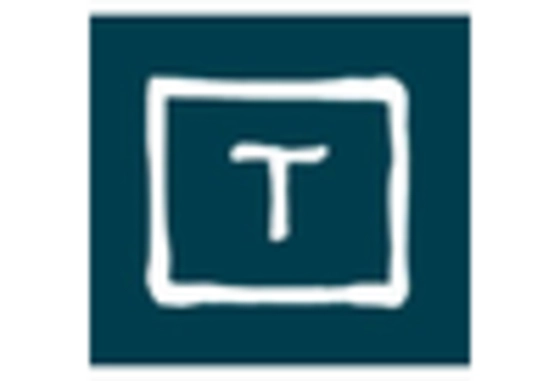Growing Popularity of Golf
The increasing popularity of golf as a recreational activity is a significant driver for the Golf Tourism Market. Golf has transitioned from a niche sport to a mainstream leisure pursuit, attracting a diverse demographic. This shift is evidenced by the rising number of golf courses and facilities being developed worldwide, catering to both seasoned players and newcomers. Recent statistics indicate that participation rates in golf have surged, particularly among younger generations who are drawn to the sport's social and competitive aspects. This growing interest not only enhances the appeal of golf tourism but also encourages destinations to invest in high-quality golfing experiences. As golf continues to gain traction, the Golf Tourism Market stands to benefit from an expanding customer base eager to explore new courses and destinations.
Focus on Health and Wellness
The growing emphasis on health and wellness is emerging as a significant driver for the Golf Tourism Market. As more individuals prioritize their physical and mental well-being, golf is increasingly viewed as a holistic activity that promotes fitness and relaxation. Many golf resorts are now incorporating wellness programs, such as yoga, spa treatments, and healthy dining options, into their offerings. This trend aligns with the broader movement towards experiential travel, where tourists seek activities that contribute to their overall health. Data indicates that wellness tourism is on the rise, and golf tourism is well-positioned to capitalize on this trend. By integrating wellness elements into the golfing experience, the Golf Tourism Market can attract a wider audience, including those who may not have previously considered golf as a primary travel activity.
Increase in Disposable Income
The rise in disposable income among consumers appears to be a pivotal driver for the Golf Tourism Market. As individuals experience an increase in their financial resources, they are more inclined to invest in leisure activities, including golf tourism. This trend is particularly evident in emerging economies, where a burgeoning middle class is seeking premium travel experiences. According to recent data, the average expenditure on leisure travel has seen a notable uptick, with golf tourism capturing a significant share of this market. The willingness to spend on high-quality golf courses and luxury accommodations indicates a robust potential for growth within the Golf Tourism Market. As more individuals prioritize travel and leisure, the demand for golf-related experiences is likely to expand, further solidifying the industry's position in the broader tourism sector.
Investment in Golf Infrastructure
Investment in golf infrastructure is a crucial driver for the Golf Tourism Market. Countries and regions are recognizing the economic potential of golf tourism and are actively investing in the development of new courses, resorts, and related facilities. This influx of capital not only enhances the quality of golfing experiences but also attracts international tournaments and events, further elevating the profile of destinations. Recent reports indicate that regions with robust golf infrastructure tend to experience higher tourist arrivals, as they offer a diverse range of golfing options. The commitment to improving facilities and services is likely to create a more appealing environment for golf tourists, thereby stimulating growth within the Golf Tourism Market. As infrastructure continues to evolve, it may lead to increased competition among destinations, ultimately benefiting consumers.
Emergence of Golf Packages and Tours
The introduction of specialized golf packages and tours is transforming the Golf Tourism Market. Travel agencies and tour operators are increasingly offering tailored experiences that combine golfing with local attractions, accommodations, and dining options. This trend caters to the evolving preferences of travelers who seek comprehensive experiences rather than standalone activities. Data suggests that golf packages, which often include multiple rounds at various courses, are gaining traction among tourists. These packages not only simplify the planning process for travelers but also enhance the overall experience by providing access to exclusive courses and amenities. As the demand for curated travel experiences grows, the Golf Tourism Market is likely to see a surge in interest from both domestic and international tourists seeking unique golfing adventures.


















Leave a Comment